Submitted by Berrin Chatzi Chousein
Exclusive Interview with Tomas Koolhaas about REM Documentary
United States Architecture News - Apr 20, 2016 - 11:28 11816 views
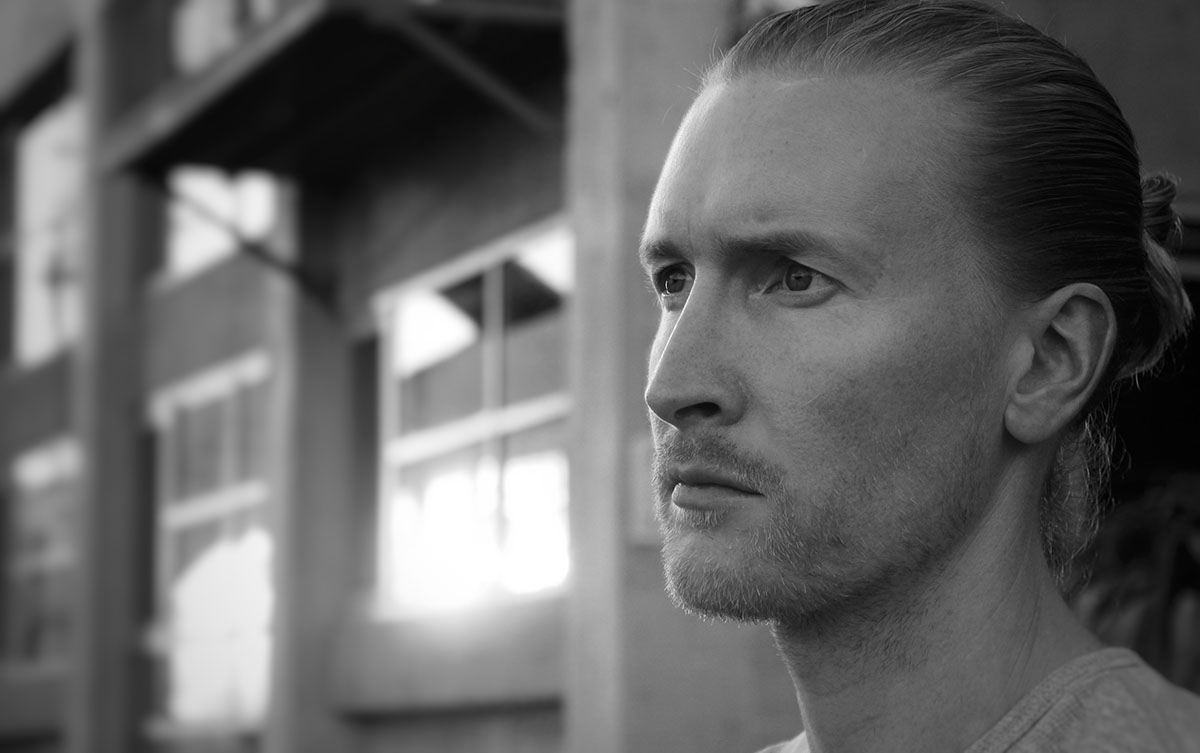
Tomas Koolhaas is a Los Angeles-based filmmaker and the son of Rem Koolhaas. Tomas Koolhaas made an architectural documentary about his father - Rem Koolhaas, arguably, the most speculative and prominent architect, theorist and urbanist in the world. But 'REM', the upcoming documentary, is not about Rem Koolhaas' personal life, a normal career trajectory, OMA's works or classical urban scenes of the cities.
On the contrary, Tomas Koolhaas' lenses focus on the 'human experience of architecture' instead of the generic or static image of architecture that we are all familiar with. The film becomes a more evocative, exciting and visceral experience of Rem's buildings and shows what is happening around them. ''It's really none of those specifically, but they are all included. It's more organic than that. I used a more first-person approach where the viewer experiences those things through following Rem or the users/inhabitants of the building'' Tomas told WA.
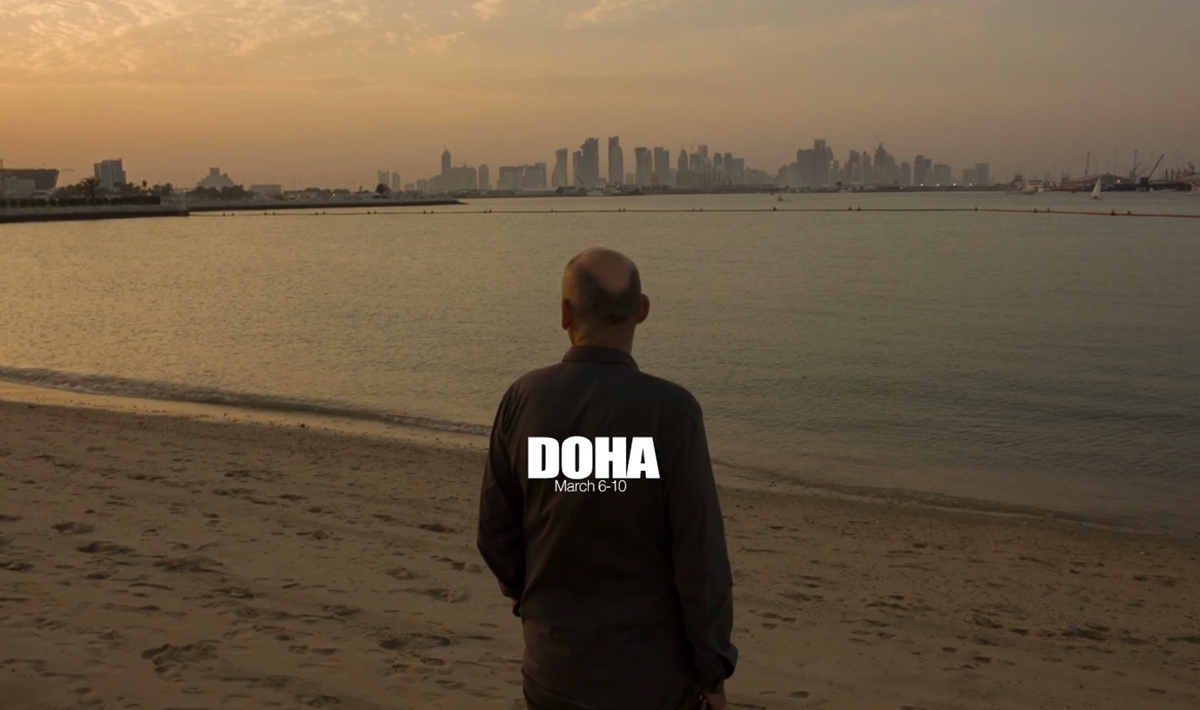
''The Nothingness of the desert was not only beautiful to shoot, but was super inspiring not only for me, with my camera, but also for Rem''......''The tone was more philosophical, less intellectual'' stated Koolhaas in his documentary.
Tomas started working on REM's documentary on Oct 7, 2011 and he released a short version on his vimeo page some time ago. Tomas is also featuring a journal on the homepage of REM documentary, on his own experiences while preparing the documentary. Although no specific release date has yet been set by Koolhaas, the movie is now in post-production and at the stage of distribution.
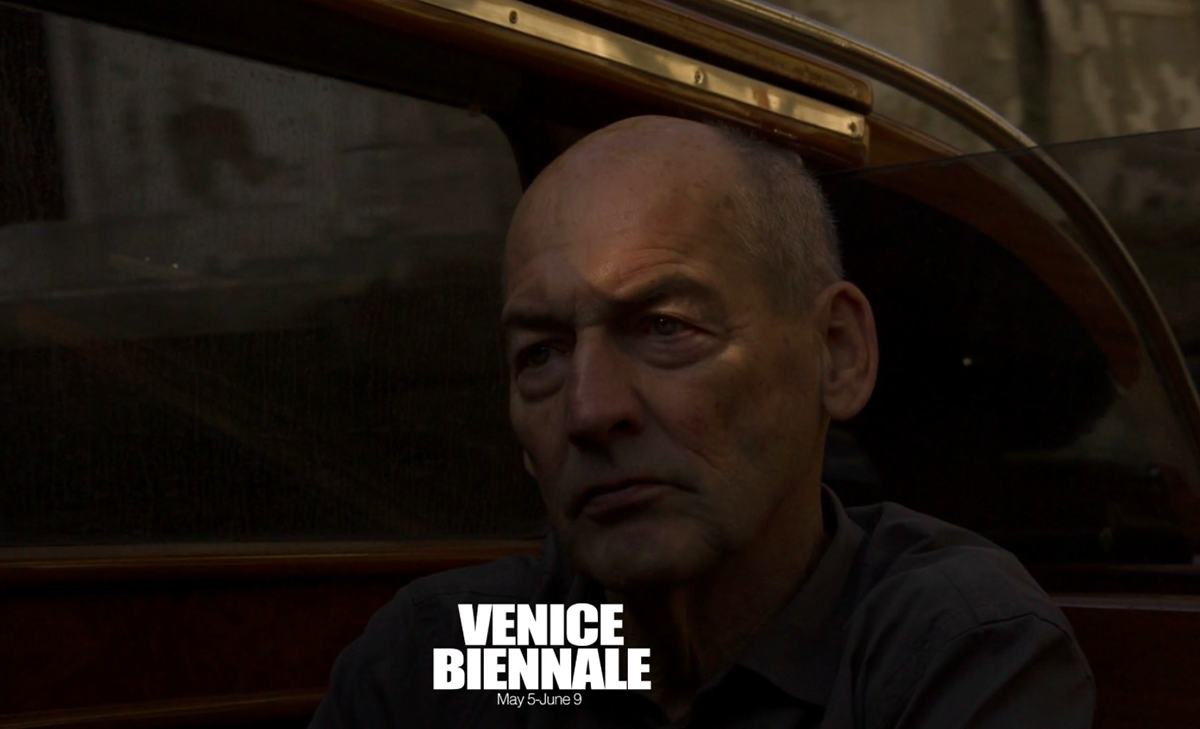
Tomas called 'The Biennale' as an extremely frenetic time and therefore contributed to him for a different filmmaking approach.
Tomas Koolhaas, 36, undoubtedly presents a unique and more privileged approach in REM and he will be a new protagonist in the visual material world, since he reveals an unexperienced thing from his own perspective. One could say Tomas' recon ability is not something he acquired himself, but rather than his idiosyncratic perspective comes from his family genes - It is in the DNA of Tomas Koolhaas.
Rem's daughter Charlie Koolhaas, 39, is a photographer. She photographed many of his buildings. Tomas' mother-Madelon Vriesendorp is a Dutch artist and known as one of the co-founders of the OMA in the early 1970s with Rem Koolhaas and Elia Zenghelis and Zoe Zenghelis. Vriesendorp has produced books, paintings and and an exhibition titled ''The World of Madelon Vriesendorp: Paintings/Postcards/Objects/Games".

While Rem was giving an interview to the press, the backdrop scenes were captured by Tomas as ''the most incredible moments, with intelligent and lucid questions''.
REM aside, Tomas Koolhaas worked on several movies as a cinematographer, including music videos, narrative features, art films, short films and documentaries. 'Heavy', a short drama was produced in 2008 - it was both written and directed by Tomas Koolhaas. 'Mean Worls Theory', 'The Red Circle', 'The Man in the Glass Case', 'Drived' and 'The Years in the Desert' are only a few of his recent features or films.

Tomas followed Rem and filmed the whole ritual- ''he would swim for half an hour every day'' says Koolhaas.
Read the full transcript of our interview with Tomas Koolhaas about REM:
Berrin Chatzi Chousein: Could you please tell us what exactly is REM’s Documentary about?
Tomas Koolhaas: The documentary explores the philosophical and human context of Rem's work and explores him as a thinker, not just in relation to his built work but in a more expansive way.
Berrin Chatzi Chousein: You’re a cinematographer right? Is it the longest-running film or architecture film you have made so far? Could you please tell us about yourself?
Tomas Koolhaas: Yes, I've primarily been a cinematographer for the last 15 years in Los Angeles. In that time I've worked on projects of every type/genre (music videos, narrative features, art films, short films, documentaries etc) all of which have informed how I work and the kind of approach I use on a project, including REM. This was the first feature film I directed and really the first time I could do almost whatever I wanted.
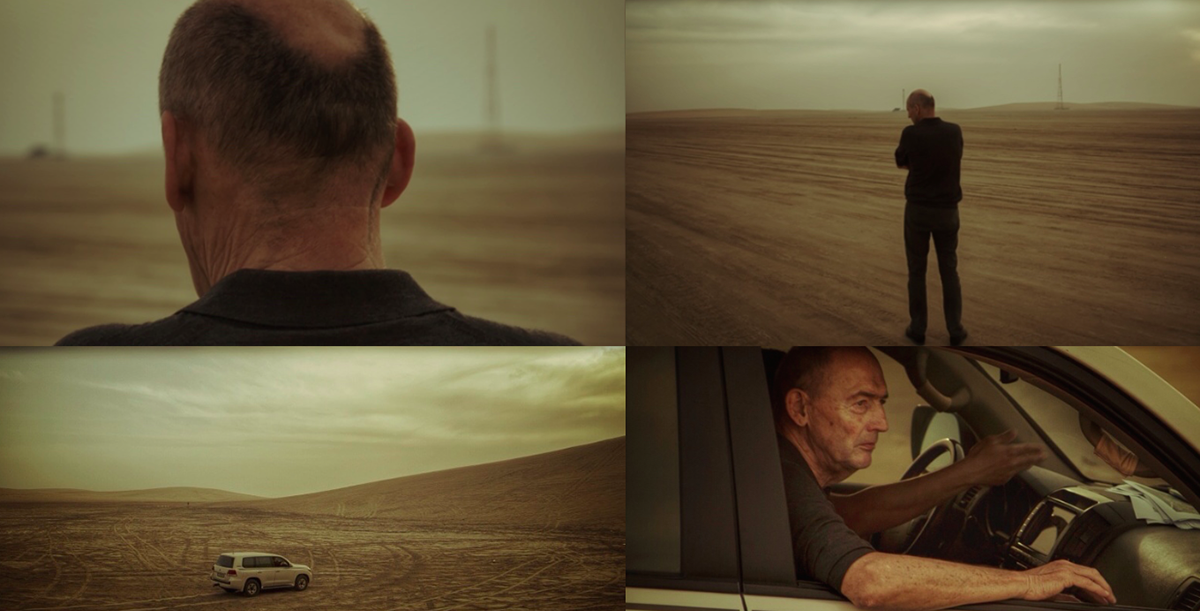
''This shot was captured while Rem was in the car driving sideways –crablike- down the dune at around 50 mph'' says Tomas.
Berrin Chatzi Chousein: You have released a very short teaser short time ago and we understand from this short video that the film explores much more ‘humanistic experiences’ of architecture rather than a generic/static image of architecture. What do you exactly want to show to the audience in this film?
Tomas Koolhaas: The reason I took that approach was two-fold. Firstly as a cinematographer, I find it extremely boring and visually unsatisfying to watch most architecture documentaries. Talking head interviews are ok for conveying dry intellectual ideas but aren't very evocative to watch. Also, static/lifeless shots of buildings don't really reveal much about the 'feel' of the building -texture, scale etc.. So I wanted to make a film that had an exciting, evocative and more visceral visual style, which was less like a typical documentaries and more like the the narrative films I've worked on. The second reason was that I feel current architecture films are very narrow in their perspective (focusing only on intellectual/biographical information) and therefore exclude a large potential audience. I wanted to be more expansive with my perspective and include human stories that would make the film more relatable and accessible to a wider audience.
Berrin Chatzi Chousein: What is your special focus in the documentary - the story of Rem Koolhaas’s life, the buildings or OMA’s working procedures?
Tomas Koolhaas: It's really none of those specifically, but they are all included. It's more organic than that. I used a more first-person approach where the viewer experiences those things through following Rem or the users/inhabitants of the building.
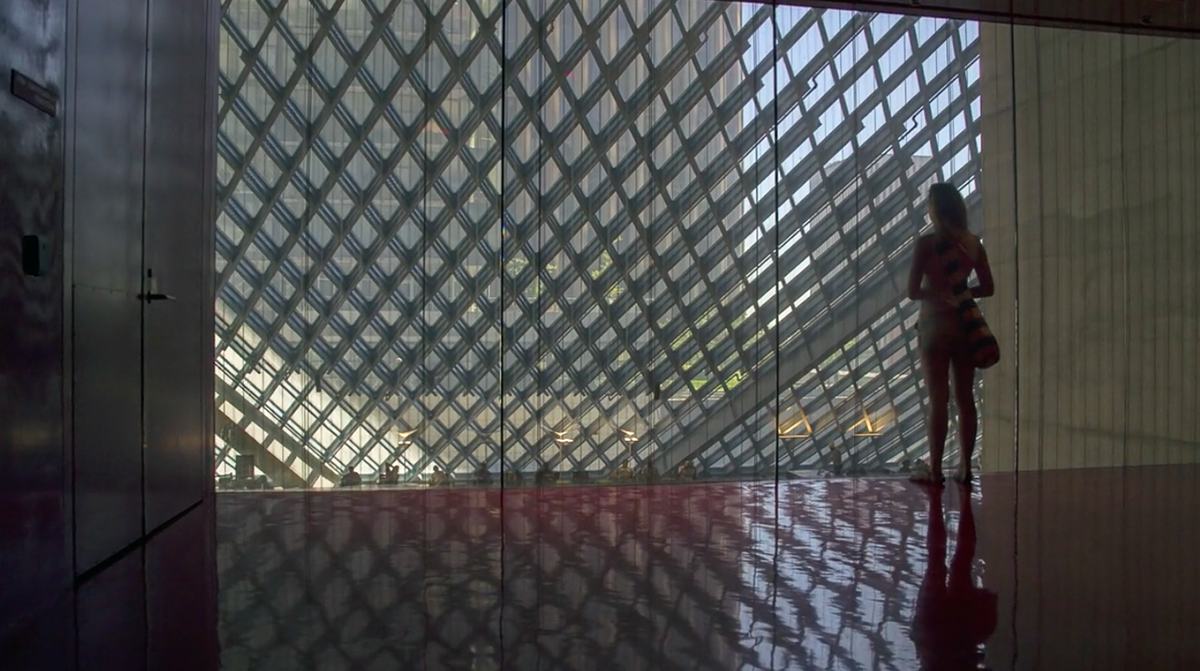
Inside experience of The Seattle Public Library- the image depicts how it is living in daily life.
Berrin Chatzi Chousein: I think this will be the most anticipated architecture documentary of recent years since you’re putting an idiosyncratic perspective in the movie and that makes you more privileged in the architecture documentaries. Do you think that will your movie contribute to architecture? And in what way?
Tomas Koolhaas: I don't know, that depends on the viewers. It's not my goal to effect architecture or architecture discourse in any way. It's hard enough to make a good documentary, that was my only goal. I do think that people will see/experience things they haven't before because of the unique approach I took, so as an unintended by-product I think it's possible it might create some new conversations about Rem/his work/architecture in general but it depends on how people relate to that perspective.
Berrin Chatzi Chousein: How long will it be? And in which medium we will be watching this documentary?
Tomas Koolhaas: It's feature length. I'm working on how it will be distributed now, so can't answer that yet.
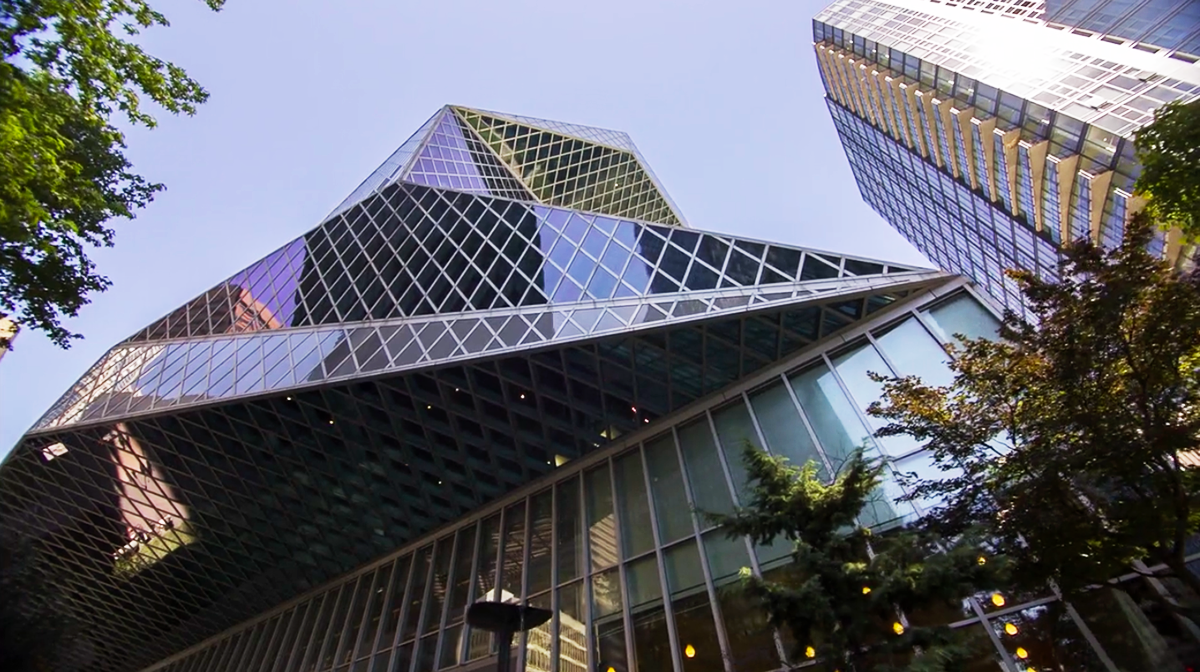
The Seattle Public Library in Seattle, Washington is one of the most important components of the film. It shows the inside-outside relationship.
Berrin Chatzi Chousein: I want to learn the sensorial reflections of this movie on the audiences. Will it be a dramatic, chaotic, informative or epic? How we would call it?
Tomas Koolhaas: I think that will vary person to person, but I think it will definitely resonate on a different level than most architecture documentaries. Mostly they resonate only with the intellectual part of the viewer's brain, REM will also resonate in much more subconscious way connecting to the emotional, philosophical and instinctive parts of the brain.
Berrin Chatzi Chousein: Does Rem Koolhaas tell you his special requests or ideas about the film during the production? I mean any personal interference?
Tomas Koolhaas: Absolutely not. When we embarked on this project we discussed that specific issue at length and we were both very clear about Rem not trying to guide or dictate anything about the film. It would be unethical in a way, it would be as if he had made a film vicariously about himself. Also, he doesn't have the time to try and micromanage any one else's projects, he's way too busy with his own.
Berrin Chatzi Chousein: At what stage is the film now? When will you release the documentary?
Tomas Koolhaas: It's finished, I'm currently at the stage of figuring out distribution.
Berrin Chatzi Chousein: Will you make a second version of this movie?
Tomas Koolhaas: There may be a shorter version for TV, but I'm also looking into making a separate shorter version with only music, no dialogue, a totally non-linear, purely experiential version.
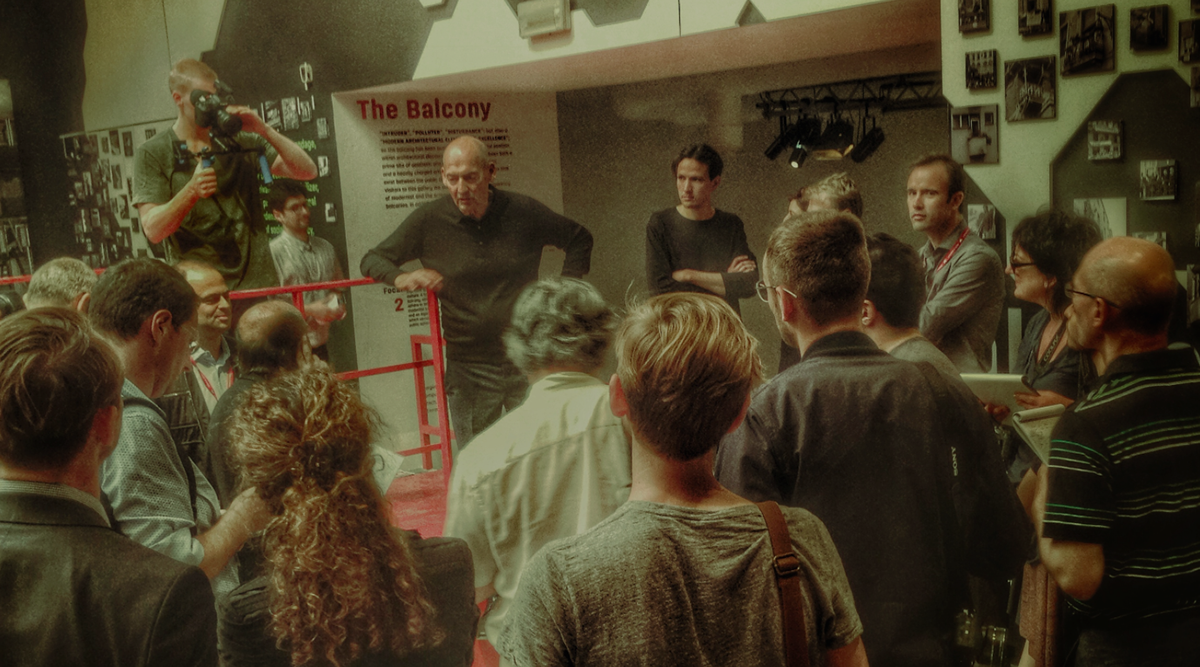
Tomas' shot from the Biennale- 'fundamentals'.
Berrin Chatzi Chousein: What are your expectations about the film, especially in terms of architects?
Tomas Koolhaas: To the degree that it's possible, I try not to have expectations, but I hope people that watch it find something in it that they haven't experienced before. That's pretty much it.
Tomas Koolhaas image © Alyson Lim
Other images courtesy of REM Documentary